Honestly, I didn’t expect Kyoto to hit me this hard. Kyoto has always been part of the Japan plan to visit especially if it’s your first time. If you want to know the most efficient way to spend 4 days in Kyoto to enjoy the main attractions, learn how to beat the crowds and discover hidden alternatives to popular spots, read on for more!

Just a heads up! This post may contain affiliate links, meaning I get a commission if you decide to purchase something through the links, at no additional cost to you. Your support helps me continue provide the best information to help you with your travels. Thank you!
In a Rush? Here are some great Hotels to stay during your 4 days in Kyoto
⭐ The Thousand Kyoto – modern, peaceful and right next to Kyoto Station. Perfect if you’re coming in by train.
⭐ Gion Yoshi-Ima Ryokan – a traditional tatami-room stay right in Gion for the full Japanese experience, stunning rooms and good location as well.
⭐ Candeo Hotels Kyoto Karasuma Rokkaku – stylish, clean and central without the huge price tag, plus great decor and lovely rooms.
Tip: Book early. Kyoto’s tourism has bounced back strong in 2025 and prices rise closer to travel dates.
If you are looking for a fun things to do in Kyoto, you can get this fun Kyoto Samurai Experience or train like a samurai with this Samurai Training with Modern day Musashi in Kyoto
or this amazing experience KYOTO Tea Ceremony with kimono near by Imamiya Jinjya Shrine
and this is so good with kids too Ramen Cooking Class at Ramen Factory in Kyoto
🗺️ Insurance: Protect yourself on your trip with Travel Medical Insurance.
📱 Connect: Always stay connected, and do so seamlessly, with a Japan eSim!
🚗 Traveling around Kyoto and the rest of Japan? Discover Affordable Car Rentals here!
You will excitedly arrive in Kyoto thinking “ooh temples, geishas, maybe cherry blossoms, maybe some matcha,” but I can almost guarantee that you will end up enjoying the beautiful architecture, the people of course, the way it feels like you are almost back in ancient Japan minus the tourist, and the way the lights hits those Ryokan houses and when you stand on a bridge looking across the rivers at dusk. Out of everywhere I have visited in Japan, I can safely say Kyoto is one of my favourites.
The local food? Of course I’m obsessed. The culture? It’s what you see online, movies, anime but so much more. The people that we have come across were kind and helpful even if you don’t know Japanese though we do try with translation apps, and there’s just so much to do and see here.
I ended up spending a 5 days in Kyoto but I actually think 4 days in Kyoto is probably the perfect amount of time for most people visiting on a holiday without feeling too rushed. Just enough time to explore, visit the important sites like Gion and find out its history, temples, try great food, and enjoy the whole vibe without feeling rushed.
After travelling through the usual golden route for Japan, I’ve put together travel guides about Japan based on my experience to help you plan your trip. And in this one, I’ll take you through my personal 4 days in Kyoto itinerary with all the nice food spots, new regulations because they keep changing and must-see sights included.
List of contents:
- A Quick Kyoto Travel Guide: Everything You Need to Know Before Visiting Kyoto Japan
- Day 1: Fushimi Inari, Kiyomizu-dera & Gion at Dusk
- Day 2: Arashiyama Full Day Adventure
- Day 3: Nara Day Trip (Bowing Deers, Mochi, and Temples)
- Day 4: Kinkaku-ji (Golden Pavilion), Nijo Castle, Philosopher’s Path & Nishiki Market
- Kyoto Travel Regulations & Etiquette (2025)
- FAQ on 4 Days in Kyoto
- Final Thoughts on Your 4 Days in Kyoto

A Quick Kyoto Travel Guide: Everything You Need to Know Before Visiting Kyoto Japan
English is not widely spoken, there will be some people who will understand, and most signs and menus are in Japanese and some will have English as well. People are helpful, but don’t expect fluent English. Download Google Translate which you can use to speak and translate live and the person will be able to do so as well, oh and Google Lens, it’ll save your life at restaurants and shops for prices and menu.
Public transport here is amazing. Grab an IC card such as ICOCA card, you can use it for their buses and subways and trains systems here. Their buses are quite prominent here and easy to use to get to most attractions. But if you want to hire a car, you can also do that and drive around at your own pace.
Weekends do get pretty busy. Kyoto is a popular destination also for the locals, so it can get busy during weekends with Tourist and locals alike.
Cash is king. This is widely known still. Bring the cash as a lot of smaller places and ramen stalls don’t really take cards, so always have some cash on you. ATMs are also easy to find which you can find the 7 11or Familymart.
The Summer weather is no joke. Kyoto gets so hot, and humid in summer. Always carry water, wear sunscreen, and bring a small towel if you sweat a lot. Also carry or you can buy an umbrella there to protect you from the sun as you walk about.
I am compiled a more extensive list of tips you need know before visiting Japan which you can read and save for later, and will be useful to know.
Day 1: Fushimi Inari, Kiyomizu-dera & Gion at Dusk
Morning: Let’s visit the Fushimi Inari Shrine
I started Kyoto on a full new day. Start your morning with a lovely breakfast, if your hotel provides it, definitely go for it. If not grab an egg sandwich from a convenient shop and you won’t regret it, its so so good (unless you hate egg and allergic then please don’t). And why I say start with a good breakfast because we are heading to Fushimi Inari.
We stayed around the centre of Kyoto, as we thought it will be easy to go to places from here. We made our way to Fushimi Inari Taisha, the earlier you can get there, the better to avoid a lot of the crowds. And great for pictures and videos if you are taking some, and make sure to wear comfortable shoes because it will be a long upward walk.
Fushimi Inari is free to enter and is open 24/7. The main path is lined with thousands of Torii gates thats winding upwards Mount Inari, and there are few levels, and resting spots too so don’t worry. Also take a moment to take it all in. If you can I recommend trying to go up to the Yotsutsuji intersection, it’s about halfway. and you can get amazing views over Kyoto and there are also food and drinks venue here.
But if you are up for the challenge and a rest period. Go on upwards to the very top! YOU CAN DO IT! It’s very rewarding even though the trek up definitely didn’t feel like it. The Torii gates get smaller as you go up. And when you think you are the top, there’s a small podium of sorts, that’s the actual top of the Fushimi Inari.
Pro Tip: The higher you go, the less crowds and more pictures and videos for you
How to get there: Take the JR Nara Line from Kyoto Station to Inari Station (5 minutes, about ¥150) or the Keihan Main Line to Fushimi Inari Station (slightly longer walk to the shrine). Make sure you have an IC card like ICOCA or Suica to use for the transportation.
Coffee Break Near Fushimi Inari
Depends on when you finish your hike in Fushimi Inari. We need a break and a coffee break. Head to Vermillion Café, which is on a little hill with a gorgeous terrace overlooking Shin-Ike pond. They are bi-lingual cafe and also independent cafe. It’s about a 10-minute walk from the shrine, and lovely espresso drinks.
There’s another cafe I had wanted to visit but didn’t get to and it was Kissa Roku . The vibes on their site looked amazing, and had good offering of cafe food too. Maybe next time but if you do visit, let me know how it is!
Afternoon: Kiyomizu-dera Temple
After a lovely coffee break, we headed towards Kiyomizu-dera Temple, and this temple one of Kyoto’s most iconic spots. I am very excited to come here and see it especially after seeing in Instagram and on Youtube. I truly think it’s so beautiful regardless what time of year you visit. Though will have to visit in the Autumn someday to see the fall leaves colours around the temple.

To get to Kiyomizu-dera from Fushimi Inari: We took the Keihan Main Line from Fushimi Inari Station to Kiyomizu-Gojo Station, and it was about 7 minutes and costs ¥210. From the station, you will have to walk maybe about a 20-minute uphill walk.
I say maybe 20 minutes because we walked through one of the best streets leading up to the temple, so many nice shops and things to buy and see, took over an hour to reach the temple itself. Oh, you can grab bus #100 or #206 from Gojo-zaka bus stop if you’re tired from the morning hike.
The ticket to get inside Kiyomizu-dera costs ¥400 for adults, The temple dates back to 778 and the current structures are from 1633. We walked around, taking in the sites, pictures and videos of course, went through to many different areas of the temple, and apparently you can drink from the Otowa Waterfall (each stream supposedly grants a different wish), and of course, enjoy the breathtaking views.
JISHU-JINJA SHRINE
Speaking of wishes, if you are looking for love, go up the steps behind Kiyomizu-dera’s Main Hall to Jishu Shrine (a.k.a the “Cupid of Kyoto”).
I consider Jishu-jinja Shrine to be a hidden gem because it’s one of those places hiding in plain sight! It’s so easy to walk past the entrance to this shrine as it’s tucked away to the side within the grounds of Kiyomizu-dera. This UNESCO World Heritage site is dedicated to the god of love and relationships (specifically marriage) and dates back to ancient times.
One of the shrine’s main features are the Koiuranai-no-ishi , “Fortune Stones of Love”. It’s said that if you close your eyes and walk from one stone to the other stone, with no peeking! and if you make it, you will find your true love. I tried it, people were supportive, reached the stone but only slightly off and I’m taking it as a win haha.
You’ll notice on the ema (wooden wishes left by worshippers) a man holding a hammer and a rabbit, as well as statues of these figures nearby. It’s believed that anything the lucky hammer hits is meant to make money appear. So this one is obviously a popular photo spot for tourists!
Yasaka Kōshin-dō
Tucked away in the quiet streets behind Kiyomizu-dera in the Higashiyama neighbourhood is the surprising Yasaka Koshindo temple 八坂庚申堂 (also known as Daikoku-san Kongō-ji Kōshin-dō). It’s quite easy to walk right past the entrance, so this temple is often overlooked by foreign tourists! It’s an amazing hidden gem in Kyoto.
You’d be forgiven for thinking the thousands of colourful balls decorating the temple are pom poms, but they actually aren’t – they depict monkeys! Towards the back of the temple you’ll see the Three Wise Monkeys from Japanese folklore.
This small temple is dedicated to Kōshin-san, the guardian warrior of these monkeys and the deity you first see at the temple’s entrance. So many ladies here looked super excited to be here when I visited and so charming to see. Some had the “pom pom balls” ready to put on.
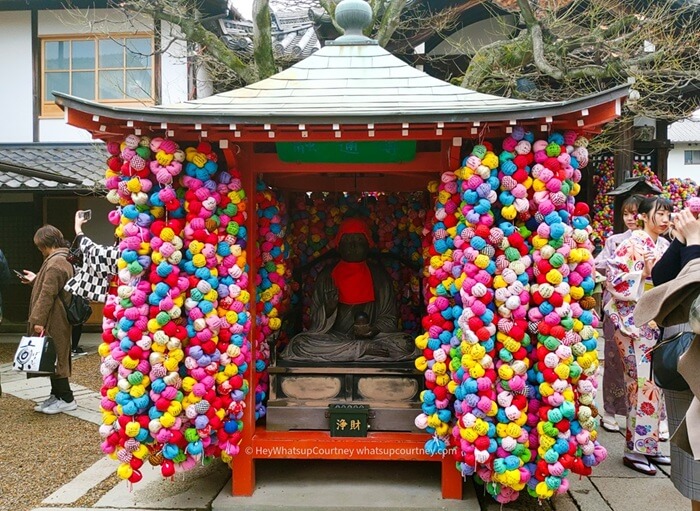
Late Afternoon: Starbucks Kyoto Ninenzaka Yasaka Chaya
On the way down from Kyomizu-Dera, there are many winding alleyways. So many that you might want to come back another time and explore more. If you walk down the streets of Ninenzaka and Sannenzaka.
These preserved historic lanes are lined with traditional wooden machiya houses, souvenir shops, and cafes. It’s very touristy but my goodness the architecture is beautiful and the sense of old Kyoto remains.
I completely understand that this is Starbucks we are talking about, but it is like McDonalds and you have to try the different ones in different countries. So Starbucks Kyoto Ninenzaka Yasaka Chaya isn’t your regular Starbucks. This Starbucks is in a 100 years old traditional townhouse with tatami mat seating areas and a Japanese garden.
I believe it’s the only Starbucks in the world where you can sit on tatami mats and sip your coffee in a historic building. Even if you’re not usually a Starbucks person, I say walk inside and have a look around, it is very busy generally but nice to check it out.
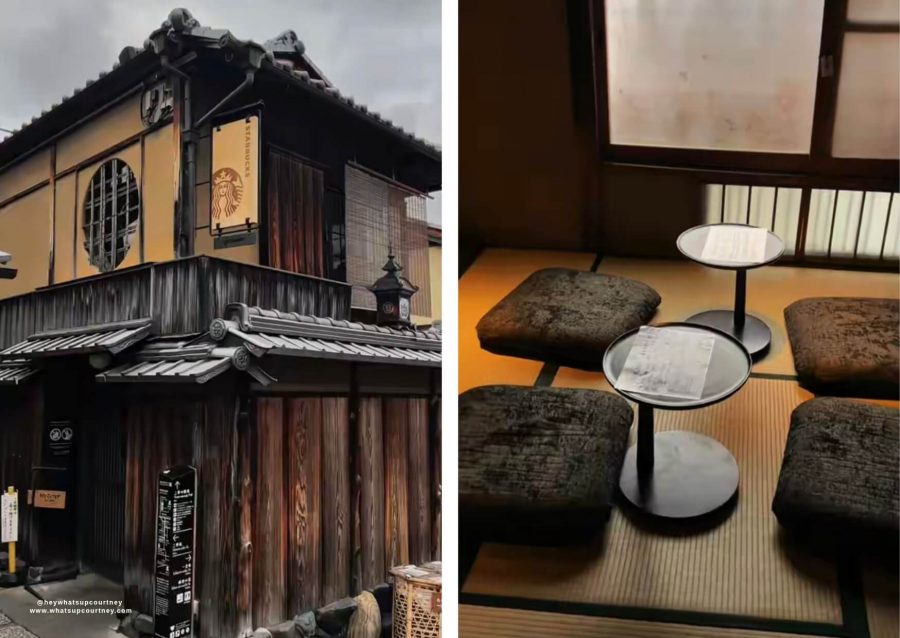
Evening: Gion at Dusk
In the evening, we visited Gion at night, Kyoto’s famous geisha district. I was told the best time to visit Gion is around evening time maybe around 7pm. The vibe here is so different at night, the wooden machiya houses are lit by lanterns, and if you’re lucky, you might spot a geiko (geisha) or maiko (apprentice geisha) walking around.
Important note about Gion etiquette: Ok, I need to say this because it’s really important. The Geisha are not am attraction, they are working people and they have chosen this profession which is wonderful. Please do not harass them or stick your camera in their faces because I am sure you won’t like it either if someone did that to you. Tourist behaviour has gotten so bad that Kyoto has banned tourists from some private alleys in Gion. Just politely observe from a distance, and that’s it. It’s so simple. They’re young women and some as young as 16 who are trying to do their jobs, and they deserve respect. Please don’t be that person.
We around Hanami-koji Street and the atmospheric side streets (the public ones with signs). The area is gorgeous at night, and you’ll get that quintessential Kyoto feeling.
Dinner in Gion
As always, food is always in our mind. We had some yakitori at Gion Kappa, it has the izakaya vibes and yummy yakitori. We also strolled along Pontocho Alley, a narrow atmospheric lane along the Kamo River lined with restaurants and traditional tea houses. There are a number of shops around and some sell nice sweets and some street food. After dinner and a wander, we went home to bed, and rest our feet for the next day.

Day 2: Arashiyama Full Day Adventure
Early Morning: Bamboo Grove
Today is the day to wake up super early. If you want to experience the Arashiyama Bamboo Grove without the crowds, you might need to be there as early as possibly, potentially 6:30am or just after sunrise depending what season you are visiting. Ok in fairness, we arrived at 7.30am in Spring because we were bit late. I know, I know, but please hear me out. The difference between 6:30am and 9am at the bamboo grove is quite literally night and day.
It was worth coming in early morning mainly because you’ll have most of the area with the bamboo mostly to yourself. It’s so peaceful, great pictures and less crowds shoving around. And we notice the difference in the number of people by around half 8.
Getting to Arashiyama: Take the JR Sagano Line from Kyoto Station to Saga-Arashiyama Station (about 15 minutes, ¥240). Alternatively, you can take the Hankyu Arashiyama Line to Arashiyama Station, which drops you closer to the main bridge.
Arashiyama is free which is always a good thing, for me at least, and it is always open. We walked through the main path, and also explored the smaller side paths cause mainly out of curiosity.
Mid-Morning: Tenryu-ji Temple
After the bamboo park, we went to Tenryu-ji Temple which is a UNESCO World Heritage site and one of Kyoto’s most important Zen temples. It has the Sogenchi Garden which was designed in the 14th century to reflect the surrounding Arashiyama mountains. The garden costs ¥500 to enter (or ¥800 if you want to see the temple buildings as well), and it’s one of the most peaceful spots in Kyoto.
Afternoon:
You have 2 great options here, one is physical and the other more relaxing.
Option A: Iwatayama Monkey Park
We did this one, its a ehem about 30 minute uphill hike (could be shorter if you are fitter than me), to the Monkey Park! For once we the humans are in the zoo as it should be.
You’ll see wild Japanese macaques (over 120 of them) roaming freely and from the top you will get incredible views of Kyoto in the background. The Entry is ¥600. So the monkeys are used to people but still vey much wild, and there is always a person there to watch over things and they monkeys seem to know him as well. Definitely follow the rules.
And of course, we had to feed the starving monkeys (I jest, they are always wanting food haha). We bought their special food to feed them from inside the observation building, and it was so fun.
Option B: Hozu River Boat Ride
This is far more relaxing and I did debated on doing this but it’s not everyday you meet wild monkeys in their environment. This is the traditional boat ride down the Hozu River through the gorge. They said the boats depart from Kameoka (you will have to take a train to get there) and float back down to Arashiyama.
It takes about 2 hours and costs around ¥4,800. And I reckon its going to be amazing in autumn or spring when the flowers are out or the autumn colours.
Or if you are feeling up to it, you can do both! We also walked down the shops and cafe near the river, so much time was spent here too just exploring and trying some of the bread from the bakeries.
Evening: Pontocho Alley Dinner
We headed back to central Kyoto and had dinner along Pontocho Alley we visited before. This narrow street along the Kamo River is packed with restaurants. Some restaurants have riverside terraces (noryo-yuka) in summer, which is a quintessential Kyoto dining experience.
Day 3: Nara Day Trip (Bowing Deers, Mochi, and Temples)
Morning: Train to Nara
For Day 3 on your 4 days in Kyoto Itinerary, I’d definitely recommend getting out of the city and do a day trip to Nara! This town is only 45 min to get to and its so worth it. I was very excited to see the deers. We took the JR Nara line from Kyoto Station to Nara Station or you can take the or the Kintetsu Nara Line to Kintetsu-Nara Station (45 minutes, ¥640 one way – this station is slightly closer to Nara Park).
Pro tip: If you have a JR Pass, use the JR line. If not, the Kintetsu line is faster and drops you closer to the main sights.
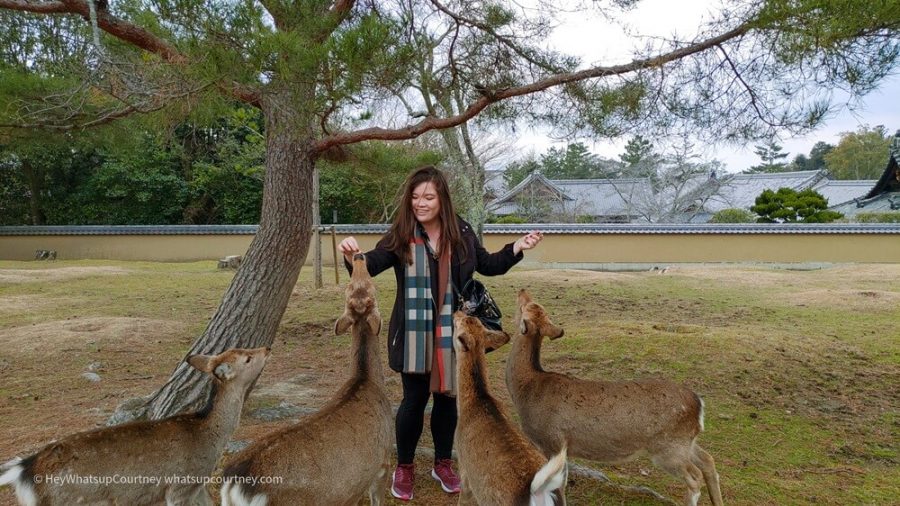
Nara Park and Deer Feeding and Mochi!
Nara is so cute! Lovely little town with over 1,000 sacred deer roam freely in the park. They are looked after by the locals and even though they look so cute and innocent, some can be mean. So don’t be too fooled by their innocent cute faces, they want food, always food, sometimes a head scratch.
One bit me in the bum looking for food, my fault really, I wasn’t fast enough in feeding them. And one ate my phone cable charging my battery bank, it was all in slow motion, so just be aware. They do bow back when you bow, some actually just do it on their own. They can also see and smell if you have food or not.
The deers are considered messengers of the gods and are protected national treasures, and they know it! You can buy deer crackers from vendors for ¥200, and the second you do, you’ll have a crowd of deer around you demanding snacks. They’ll bow to you asking for crackers, which is adorable.
On the way to the park where the deers are, it is about a 15 min walk from Nara station as we had the JR Pass. We walked pass residential area and also the famous mochi place. We watched how they pounded the mochi and also had to get some fresh ones. They were incredible, so soft and delicious.
Todai-ji Temple
After feeding the deers, we walked through Nara Park to Todai-ji Temple which ishome to the Daibutsu ( The Great Buddha) , a 15-meter tall bronze Buddha statue and it’s one of the largest in Japan. The temple building itself is massive and was once even bigger. Entry fee costs ¥600.
Inside this temple, around the back area (sort of), there’s a big wooden pillar with a hole in it that’s supposedly the same size as the Buddha’s nostril. Legend says if you can squeeze through it, you’ll achieve enlightenment.
It’s tight and I mean really tight, basically its a small hole, and one lady tried doing it and she managed it – with some difficulty but she did it! I didn’t even try, I know I will get stuck, I’m not a small person haha and yeah, you know how it is.
Lunch in Nara
After the temple, we had to have lunch, was so hungry, the deers had their fill and it’s our turn. We went to Yoshinoya, I know it’s a chain but its nice! We had a the Unagi don and the beef bowl. Had to try the original Yoshinoya in Japan.
Afternoon: Kasuga Taisha Shrine
After lunch, we walked to Kasuga Taisha, one of Nara’s most important shrines. The path leading up to it is lined with hundreds of stone lanterns covered in moss, and the shrine itself has bronze lanterns hanging everywhere.
During special festivals, they light all 3,000 lanterns, it’s called Mantoro and happens in early February and mid-August. Entry to the inner grounds costs ¥500.
I have a whole post on Nara Day Trip as a first timer guide with further details on what you can do in Nara.
Returning to Kyoto for Dinner
Head back to Kyoto in the late afternoon. You’ll want time to rest a bit before dinner because tomorrow’s your last day and we’re packing in some great spots.
For dinner tonight, we went to the famous ramen spot called Honke Daiichi-Asahi around the corner from Kyoto Station, and yes we queued for 2 hours but it was oh so so worth it. And remember, if you see a queue in Japan, join it because it’s normally good.
Day 4: Kinkaku-ji (Golden Pavilion), Nijo Castle, Philosopher’s Path & Nishiki Market
Morning: Kinkaku-ji (Golden Pavilion)
We had our breakfast at Honke Daiichi-Asahi again because it was just so good, and they open from 6am so we thought, why not! (It was less busy in the morning). After breakfast, we went to Kinkaku-ji, the famous Golden Pavilion.
Coming here in the morning is a strategic move because it gets busy during the afternoon with hoards of tourist and local tourists too. This pavilion is beautiful, smaller than I thought but still so pretty, especially when the sunlight hits the gold.
The temple grounds are beautiful, and it is like Ikea, it is a one way path, and no turning back, so take your photos as you go.
Late Morning/Midday: Nijo Castle
After the Kinkaku-Ji Temple, we ventured towards Nijo Castle, this castle is the former residence of the Tokugawa shoguns when they visited Kyoto. It is a UNESCO World Heritage site, the main attraction is the Ninomaru Palace, and it is famous for its “nightingale floors”.
These wooden floors are designed to squeak like a bird chirping when you walk on them and they are done this way to alert the guards to intruders. Pretty clever security system for the 1600s.
Getting there: Take the Tozai subway line to Nijojo-mae Station (5 minutes from Kyoto Station, ¥220). The castle is right there.
Early Afternoon: Philosopher’s Path
From Nijo Castle, we went to the Philosopher’s Path (Tetsugaku-no-michi) by bus number 5 to Ginkakuji-michi stop. So this canal is so iconic from all the cherry blossom trees that lined this canal.
The sakura trees weren’t quite in bloom yet so it was a bit bare at the time we visited but if you are here during peak Cherry blossom season, you have to go and visit. It’s called the Philosopher’s Path because philosopher Nishida Kitaro apparently walked this route daily for meditation.
Seasonal notes:
- Spring (late March-early April): Peak cherry blossom time – expect crowds but incredible scenery
- Summer (June): Fireflies appear along the canal in early evening
- Autumn (November): Gorgeous fall foliage
- Winter (Dec-Feb): Quietest time, peaceful but can be cold
Ginkaku-ji (Silver Pavilion)
Afterwards, since we’re already in the area, at the north end of the Philosopher’s Path sits Ginkaku-ji, the Silver Pavilion. It is not silver, and looks like another temple. Apparently it was meant to be silver but it just didn’t happen. They have a lovely garden with carefully raked sand patterns meant to reflect moonlight called “Sea of Silver Sand”,. It costs ¥500 to enter.
The temple is less crowded than Kinkaku-ji, and honestly, I prefer the understated elegance here. The moss garden is stunning, and the walking path up the hill offers nice views over Kyoto.
Late Afternoon
This is where you get to decide what you want to do with your last afternoon in Kyoto:
Option A: Visit Gion again
Visit the Gion area again, and venture around if you loved it the first time.
Option B: Visit Kiyomizu-dera Temple
The shops here are so nice, and lots of little shops on the other alleyways and a small temple nearby. We went back again to get some more souvenirs and we bought Baumkuchen, it was so so nice!
Option C: Nishiki Market Food Tour
End your Kyoto trip with a proper food tour through Nishiki Market, Kyoto’s 400-year-old food market called the Kyotos Kitchen. The market closes by 6pm, but I recommend getting there by 3-4pm to experience it while it’s still buzzing.
Nishiki Market is a narrow, covered street lined with over 100 shops and stalls selling everything from fresh seafood to pickled vegetables, matcha desserts, and grilled skewers. It’s the perfect place to graze and try lots of different Kyoto specialties.
Must-try foods:
- Tsukemono (pickled vegetables) – Kyoto is famous for these
- Yuba (tofu skin) – Try it fresh at one of the tofu shops
- Freshly grilled seafood – Scallops, octopus, whatever looks good
- Matcha soft serve – Because it’s Kyoto
- Tamagoyaki (Japanese omelet) – Sweet and savory rolled omelet
- Fresh mochi – Watch them make it and try the different varieties
Pro tips for Nishiki Market:
- Most vendors let you sample before buying
- Bring cash – many shops don’t take cards
- Don’t eat while walking as it’s considered rude. Most shops have small areas to stand and eat
- Go hungry because you’re going to want to try everything
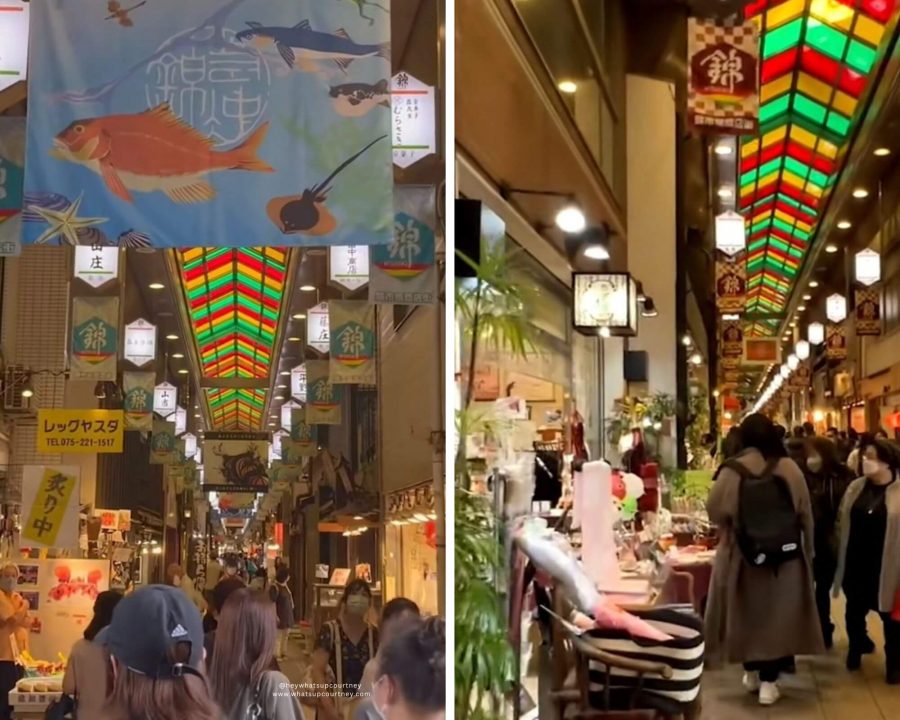
Final Dinner
After Nishiki Market, if you’re still hungry (or you want a proper sit-down meal), here are some final dinner recommendations near the market:
- Ippudo Ramen (Kawaramachi) A popular chain with delicious ramen, always reliable
- Gyoza Hohei – Some of the best gyoza in Kyoto, tiny casual spot
- Ootoya – Affordable Japanese home-style cooking, great teishoku sets
- Or Ramen street on top of Kyoto Station.
Or treat yourself to one last kaiseki meal if you haven’t done that yet, Kikunoi or Gion Karyo are both excellent.
Kyoto Travel Regulations & Etiquette (2025)
Right, before you visit Kyoto or just about to, here’s what you need to know about the current rules in Kyoto:
Gion Private Alley Restrictions
Since April 2024, some private alleys in Gion have been closed to tourists due to bad behaviour. Public streets are still accessible, but you’ll see signs marking private areas and please respect these. If you have a reservation at a restaurant or ryokan in these areas, you’re obviously allowed to go there.
Accommodation Tax
Kyoto charges an accommodation tax that varies based on your room rate:
- Up to ¥20,000/night: ¥200 per person
- ¥20,000-50,000: ¥500 per person
- Over ¥50,000: ¥1,000 per person
This will be added to your hotel bill.
What is the General Etiquette in Kyoto Japan
- Don’t eat while walking in crowded tourist areas (especially around temples and Gion)
- No smoking outside of designated areas, it’s banned on most Kyoto streets
- Don’t touch temple buildings or lean on historical structures
- Remove shoes when entering temples if required
- Don’t photograph the Geishas without permission, and please don’t block their path or touch them
FAQ on 4 Days in Kyoto
Is 4 days in Kyoto enough?
Yes, 4 days in Kyoto is plenty of time to visit all the main attractions such as Kiyomizu Temple, the bamboo forest, Climb Fushimi Inari, experience a tea ceremony with Geisha and have Kaiseki and visit Nara on a day trip. If you can stretch to 5 days, please do and have a more leisurely time in Kyoto and visit more temples or eat more places.
What’s the best time to visit Kyoto?
The best time to visit Kyoto is spring (March-May) for cherry blossoms or autumn (November) for fall colours. However these are also the busiest and most expensive times. I visited in spring and loved it. Summer (June-August) is hot and humid with rainy season in June. Winter (December-February) is cold but less crowded and cheaper.
How much does 4 days in Kyoto cost?
Budget around £80-150 per day per person for mid-range travel including accommodation, food, transport, and entrance fees. Budget travellers can do it for £50-80/day (hostels, cheap food). Luxury travellers will spend £200+/day. Don’t forget the JR Pass if you’re doing multi-city Japan travel.
What are the must-see places in Kyoto?
The must-see places in Kyoto are Fushimi Inari Shrine (iconic torii gates), Kiyomizu-dera Temple, Arashiyama Bamboo Grove, Kinkaku-ji (Golden Pavilion), Gion district for geisha spotting, and a day trip to Nara to see the deer and Todai-ji Temple. These cover the main highlights and give you a good feel for Kyoto.
Can you see everything in Kyoto in 4 days?
No, Kyoto has over 2,000 temples and shrines so you definitely can’t see everything in 4 days. But that’s not the point. Four days gives you enough time to see the major sights, try great food, soak in the atmosphere, and not feel rushed. Trying to see everything would be exhausting and you’d miss the whole vibe.
Do I need to speak Japanese to visit Kyoto?
No, you don’t need to speak Japanese but it helps to know a few basic phrases. Most major tourist spots have English signs and many restaurants have picture menus. Download Google Translate and use the camera function for menus and signs. People are helpful even if they don’t speak English. We managed fine with translation apps and a lot of hand gesturings for directions and it was appreciated.
Is 4 days in Kyoto too long?
No, 4 days in Kyoto is not too long. With over 2,000 temples, shrines, gardens, and great food, you could easily spend a week here. Four days gives you time to see the main sights plus do a day trip to Nara without feeling rushed. We spent 5 days and I still wanted more time.
Final Thoughts on Your 4 Days in Kyoto
As you’ve probably figured out by now, I really love Kyoto. There’s a sense of peace here especially if you came from Tokyo, full of culture, takes you back in time, there are both the old and new here, and the food is incredible.
For most of you coming to Kyoto, I do think 4 days in Kyoto is honestly the sweet spot. You get to see all the major sights without rushing, you have time for a day trip to Nara, and Arashiyama Bamboo forest. It’s the ideal balance of sightseeing, culture, food, and fun.
Don’t try to see everything. Kyoto has over 2,000 temples and shrines, and you’ll burn out if you try to hit them all. Instead, pick the ones that interest you most, leave room for wandering, and soak in the atmosphere.
And remember, early mornings are your secret weapon. Every major sight in this guide is better before 8am. Yes, it requires willpower to wake up early on vacation, but trust me, it’s worth it. Especially if you are after that perfect shot or if you prefer less crowds generally.
Courtney xx
Find my other Japan Travel Guides on WhatsupCourtney below:
My Japan Travel Guide 2025: First Timer’s Itinerary and Everything You Need to Know
4 Days in Kyoto Itinerary: Complete First-Timer’s Guide
8 REASONS WHY YOU SHOULD STAY AT CANDEO HOTELS ROPPONGI TOKYO
10 GREAT THINGS YOU MUST DO AND EAT AT ROPPONGI TOKYO
8 REASONS WHY YOU SHOULD STAY AT CANDEO HOTELS ROPPONGI TOKYO
10 Must-Know Japan Travel Tips for First-Time Visitors (2025)
HOTEL REVIEW: CANDEO HOTELS SHIMBASHI TOKYO WITH SKY SPA
Nara Day Trip: Deer, Temples, Mochi (First timers 2026 Guide + Map)
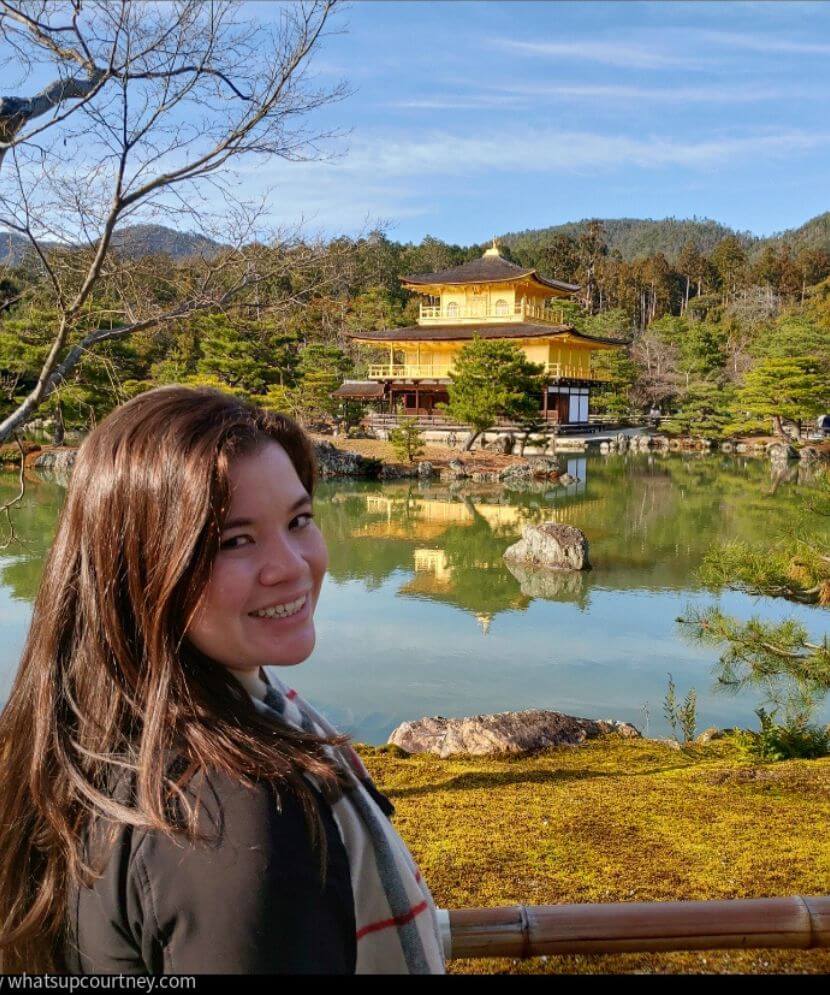
WhatsupCourtney
Owner / Traveller / Content Creator
Hey! I’m Courtney from WhatsupCourtney, I set out to create a blog that brings a whole lot of adventure to our readers. Instead of the traditional influencer and Instagram travels that you normally would see, I am trying instead, to show you the real, raw, and exotic side of travel and a whole lots of food that goes with it. Because I believe food is part of the country culture and needs to be tried and shown proudly.


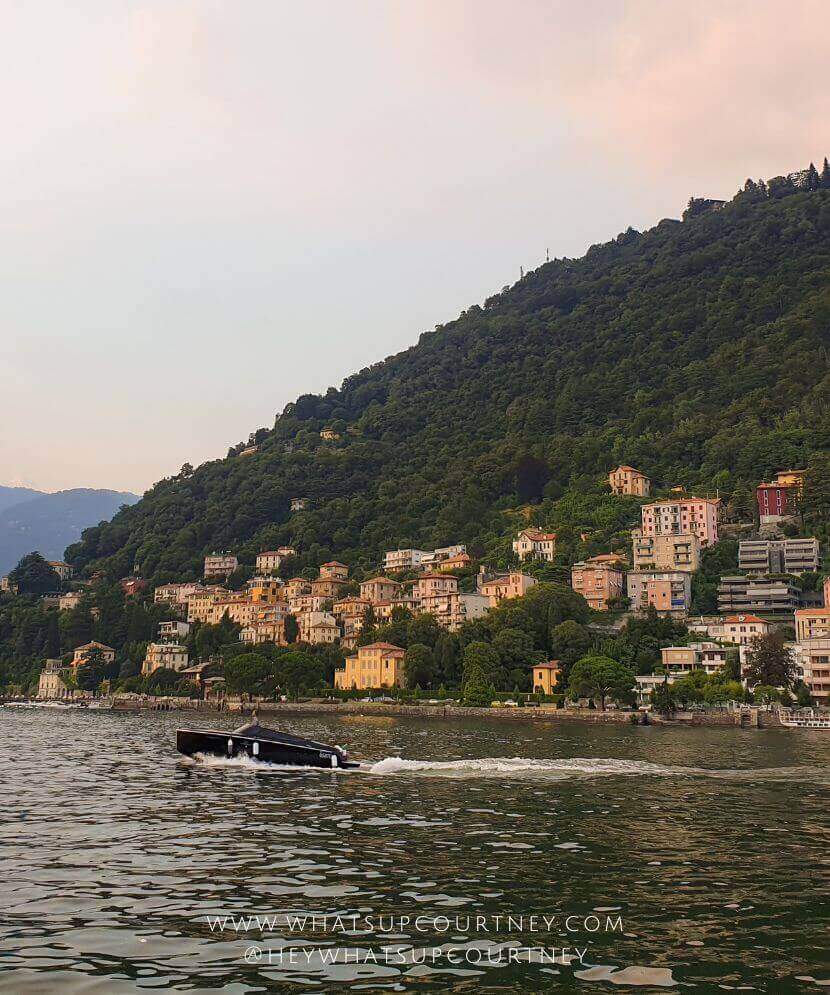
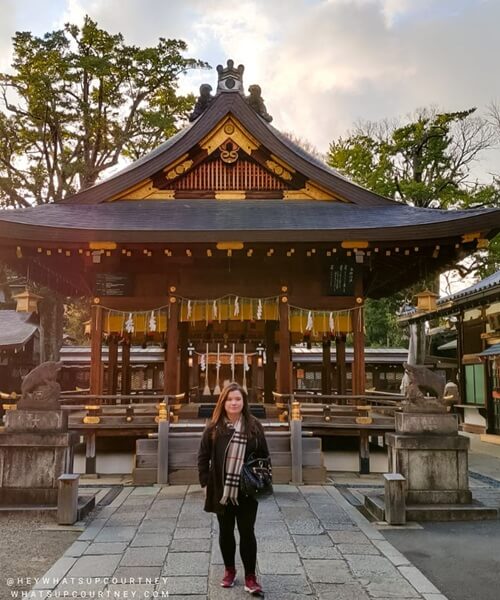
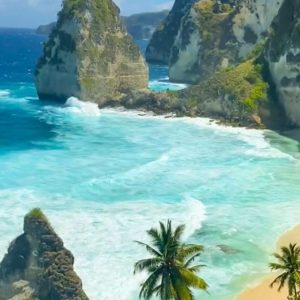
Leave a Reply